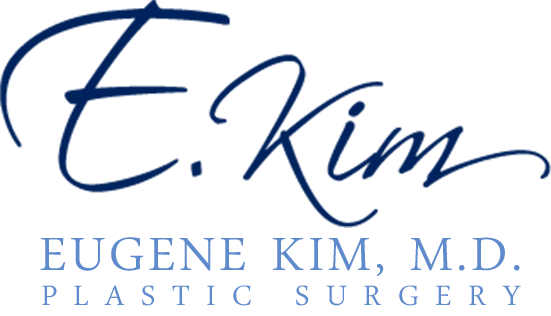 Preparing for a breast augmentation is an exciting journey, but it’s essential to plan for your recovery as thoroughly as you do for the procedure itself. Understanding the recovery process can help ensure that your healing is as smooth and efficient as possible. This blog post will guide you through preparing for your breast augmentation recovery, so you can focus on enjoying your new look while minimizing discomfort and complications. Board certified plastic surgeon Dr. Eugene Kim provides breast augmentation to patients in Beverly Hills, Los Angeles, Santa Monica, West Hollywood, CA, and surrounding communities.
Preparing for a breast augmentation is an exciting journey, but it’s essential to plan for your recovery as thoroughly as you do for the procedure itself. Understanding the recovery process can help ensure that your healing is as smooth and efficient as possible. This blog post will guide you through preparing for your breast augmentation recovery, so you can focus on enjoying your new look while minimizing discomfort and complications. Board certified plastic surgeon Dr. Eugene Kim provides breast augmentation to patients in Beverly Hills, Los Angeles, Santa Monica, West Hollywood, CA, and surrounding communities.
Understanding the Recovery Timeline and What to Expect
The recovery timeline for breast augmentation can differ between individuals, but most patients experience similar phases. Right after surgery, the anesthesia will leave you feeling groggy, and you’ll likely notice swelling and discomfort around the breast area. These initial symptoms generally start to subside within the first few days, though some degree of swelling can linger for several weeks.
Within about a week, you should be able to return to light activities, but full recovery may take several weeks to months. The timeline for returning to more strenuous activities varies and should be discussed with your surgeon. Keeping a close line of communication with your medical team during this period is essential for addressing any concerns and ensuring a smooth recovery process.
Being aware of these stages can help you better prepare mentally and physically. Understanding what to expect will not only help reduce anxiety but also enable you to plan your recovery period effectively. This preparation allows you to focus on rest and healing, which are crucial for achieving the best possible outcome from your breast augmentation.
Essential Items to Have Ready Before Surgery
Stocking up on key items before your breast augmentation can make your recovery smoother and more comfortable. Start with clothing: opt for button-up shirts or front-opening tops that won’t irritate your incisions. Steer clear of tight-fitting bras or garments that might constrict your chest area.
Make sure you have all your medications ready. Your surgeon will likely prescribe pain medication and might suggest over-the-counter options for additional relief. Cold packs or gel packs are invaluable for managing swelling and discomfort, so have a few ready in the freezer.
Hygiene supplies are another must. Dry shampoo and cleansing wipes can help you stay fresh without having to lift your arms too much in the initial recovery phase. Additionally, arrange some entertainment options like books, magazines, or a tablet with your favorite shows queued up. This can help you pass the time and keep your spirits high.
Organizing these essentials before your surgery will ensure you have everything you need within reach, allowing you to focus on a smooth and restful recovery.
Creating a Comfortable Recovery Space in Your Home
Creating a comfortable recovery space at home is essential for a smooth healing process. Choose a quiet, well-lit area that is easy to access and free from distractions. Here are some tips to create your recovery oasis:
- **Set Up a Cozy Seating Area:** Arrange a recliner or cushioned chair with plenty of supportive pillows. This setup will make it easier to rest and elevate your upper body, which can help reduce swelling.
- **Keep Essentials Within Reach:** Place a small table or tray nearby to hold essential items such as medications, a water bottle, snacks, and your phone or remote control. This way, you won’t need to stretch or move around too much.
- **Prepare Entertainment Options:** Stock up on books, magazines, or load your tablet with movies and shows to keep yourself entertained during downtime. This can make the recovery period feel less monotonous.
- **Maintain a Comfortable Temperature:** Have a fan or a blanket handy to adjust your comfort level as needed. Your body might experience temperature fluctuations during recovery.
- **Create a Calming Atmosphere:** Declutter the area to foster a relaxing environment. Consider adding some elements like soft lighting, soothing music, or aromatherapy diffusers to help keep stress levels low.
- **Arrange for Easy Access to Hygiene Supplies:** Keep items like dry shampoo, facial wipes, and hand sanitizer close by so you can freshen up without much effort.
By thoughtfully organizing your recovery space, you can focus on healing comfortably and efficiently.
Arranging for Post-Surgery Support and Assistance
A strong support system is vital during the initial stages of your recovery. Enlist a friend or family member to be with you on the day of your breast augmentation and to assist with daily tasks afterward. You’ll need someone to drive you home post-procedure, as anesthesia and pain medications will impair your ability to operate a vehicle.
Your helper can also aid with everyday activities such as meal preparation, grocery shopping, and household chores. This support allows you to rest and recover without the strain of handling these responsibilities yourself. Additionally, having someone to assist with more personal tasks, like bathing and dressing, can be incredibly beneficial during the early days of recovery when your mobility is limited.
Emotional support is equally important. Recovery can be a rollercoaster of emotions, from excitement about your new look to moments of vulnerability and discomfort. Having a trusted person to talk to and lean on can make a significant difference in your emotional well-being during this time.
Consider also arranging for professional help if needed. Home healthcare services can provide medical assistance, and meal delivery services can ensure you’re well-nourished without the need for cooking. By organizing comprehensive support, you can focus on healing and achieving the best possible outcome from your breast augmentation.
Managing Pain and Discomfort Effectively
Managing pain and discomfort effectively is crucial for a smooth breast augmentation recovery. Adhering to your surgeon’s pain management plan is essential for minimizing discomfort. Make sure to take your prescribed pain medications on schedule, even if you don’t feel severe pain at the moment, as this can prevent discomfort from escalating.
Cold therapy can be a lifesaver during the initial recovery period. Applying cold packs to the breast area in 15-20 minute intervals can help reduce swelling and numb any pain. Just be sure to wrap the cold pack in a cloth to avoid direct contact with your skin.
Staying hydrated is another simple yet effective way to aid your recovery. Drinking plenty of water helps flush out anesthesia and other medications from your system, which can alleviate some discomfort and speed up the healing process.
Remember, rest is your best friend during this period. Allowing your body the time it needs to heal will significantly reduce pain and discomfort. Try to create a restful environment by limiting noise and distractions, and use supportive pillows to keep your upper body elevated, which can help decrease swelling.
Lastly, avoid strenuous activities and heavy lifting as they can exacerbate discomfort and prolong the healing process. Always follow your surgeon’s guidelines to ensure a safe and effective recovery.
Understanding Activity Restrictions and When to Resume Normal Activities
Post-surgery, it’s essential to give your body the time it needs to heal properly. For the first few days, focus on resting and avoid any strenuous movements or heavy lifting. As your recovery progresses, you can gradually reintroduce light activities, like short walks, which can help improve circulation and reduce swelling.
Always listen to your body and avoid any activity that causes discomfort or strain. Typically, after about a week, you can begin to incorporate more routine activities, but avoid any vigorous exercise or heavy lifting until your surgeon gives you the green light. Follow-up appointments with your surgeon are crucial during this period, as they will assess your progress and provide tailored advice on when you can safely resume your normal activities, including returning to work and engaging in more intense physical exercises.
It’s essential to adhere to these guidelines closely to ensure a smooth and effective recovery.
Monitoring for Complications and When to Contact Your Surgeon
While most breast augmentation recoveries proceed without major issues, it’s important to be vigilant for potential complications. Early detection and prompt communication with your surgeon can prevent minor problems from escalating.
Be attentive to the following warning signs:
**Excessive Pain:** While some discomfort is normal, experiencing severe or escalating pain that doesn’t improve with prescribed medications may be a red flag.
**Infection Indicators:** Symptoms such as redness, increased swelling, warmth, or discharge at the incision sites can signify an infection. Fever or chills in conjunction with these symptoms also warrant immediate medical attention.
**Hematoma or Seroma:** Unusual swelling or a sudden increase in size of one or both breasts could indicate the accumulation of blood (hematoma) or fluid (seroma). If you notice these changes, contact your surgeon promptly.
**Changes in Breast Appearance or Sensation:** Sudden shifts in the shape, symmetry, or firmness of your breasts, or new sensations like numbness or tingling that persist, should be evaluated by your surgeon.
**Difficulty Breathing or Chest Pain:** These symptoms could indicate more serious complications, such as a blood clot. Seek immediate medical care if you experience any of these issues.
**Delayed Healing:** If your incisions are not healing as expected or if you notice any gaps or openings in the surgical wounds, it’s crucial to inform your surgeon.
Keep a close line of communication with your medical team and don’t hesitate to reach out with any concerns, no matter how minor they may seem. Your surgeon is there to ensure your recovery is progressing smoothly and to address any issues that may arise.
Contact the Office of Beverly Hills Plastic Surgeon Dr. Eugene Kim
Click here see more plastic surgery procedures and treatments performed by Board Certified Plastic Surgeon, Dr. Eugene Kim on patients in Beverly Hills, Los Angeles, West Hollywood, Santa Monica, CA and surrounding areas or call 310-271-6996 to schedule a consultation.
